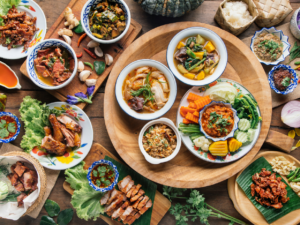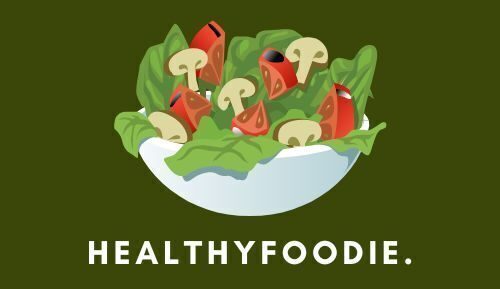
Indian food culture is incredibly diverse and rich, reflecting the country’s long history, varied geography, and diverse population. Indian cuisine is known for its complex and flavorful dishes, which often feature a wide range of spices, herbs, and ingredients. Here are some key aspects of Indian food culture:
1. Regional Diversity: India is a vast country with diverse regions, and each region has its own unique culinary traditions. North Indian cuisine, for example, is known for dishes like biryani, tandoori chicken, and naan bread, while South Indian cuisine includes dosa, idli, and sambar. The cuisine also varies from east to west, with Bengal, for instance, famous for its seafood dishes, and Gujarat known for its vegetarian fare.
2. Spices and Herbs: Indian cuisine is renowned for its use of spices and herbs. Common spices include cumin, coriander, turmeric, cardamom, cinnamon, and chili peppers. The blend of spices used in a dish, known as “masala,” varies from recipe to recipe, creating distinct flavors.
3. Vegetarian and Non-Vegetarian: India has a strong tradition of vegetarianism, and many Indians follow a vegetarian diet due to cultural, religious, or personal preferences. However, there is also a wide range of non-vegetarian dishes, especially in regions with a strong meat-eating tradition, like Punjab.
4. Street Food: Indian street food is famous worldwide for its flavor and variety. Popular street foods include chaat (a mix of fried dough, potatoes, and chutneys), vada pav, samosas, and various kebabs and rolls.
5. Regional Bread Varieties: India boasts a diverse range of bread, from the unleavened roti and paratha of the north to the fermented dosa and idli of the south. Naan and kulcha are other popular bread varieties, often baked in tandoor ovens.
6. Rice and Pulses: Rice is a staple in many parts of India, and dishes like biryani and pulao showcase the variety and flavor of Indian rice preparations. Lentils and pulses are also fundamental components of Indian cuisine, used in various dal (lentil soup) recipes.
7. Condiments and Chutneys: Indian meals are often accompanied by a variety of condiments and chutneys. These can range from cooling yogurt-based raita to spicy pickles and tangy tamarind chutney.
8. Sweets and Desserts: Indian sweets, known as “mithai,” are an integral part of the cuisine. These can range from the syrup-soaked gulab jamun and jalebi to the milk-based sweets like rasgulla and barfi.
9. Cultural Significance: Food plays a central role in Indian culture and social gatherings. Festivals, weddings, and other special occasions are often marked by elaborate feasts and traditional dishes.
10. Ayurvedic Influence: Indian cuisine is also influenced by Ayurveda, an ancient system of medicine and wellness. Ayurvedic principles emphasize the balance of flavors, textures, and energies in a meal for optimal health.
11. Religious and Dietary Restrictions: India is a land of diverse religious beliefs, and this is reflected in its food culture. Hindus, for example, avoid beef, while Muslims avoid pork. Dietary restrictions are observed with respect to these beliefs.
Indian food culture is a reflection of the country’s rich history and cultural diversity. It continues to evolve and adapt, incorporating new ingredients and culinary techniques while preserving its traditional roots. Whether you’re enjoying street food in Mumbai, a thali in Delhi, or a dosa in Chennai, Indian cuisine offers a tantalizing and unforgettable culinary experience.
Diet Chart
| Sunday | |
| Breakfast (8:00-8:30AM) | Aloo Paratha (2) + Raita (1 cup) |
| Mid-Meal (11:00-11:30AM) | Fruit Salad (1 cup) + Tender Coconut Water (1 glass) |
| Lunch (2:00-2:30PM) | 1 cup moong dal + 1 cup bhindi + 2 chapatti + salad |
| Evening (4:00-4:30PM) | Tea/ Coffee (1 cup) + Boiled Chana Chat (1 cup) |
| Dinner (8:00-8:30PM) | Chapati (2) + Jeera Aloo (1 cup) |
| Monday | |
| Breakfast (8:00-8:30AM) | Chapati (2) + Daal (1 cup) |
| Mid-Meal (11:00-11:30AM) | Fruit Salad (1 cup) + Tender Coconut Water (1 glass) |
| Lunch (2:00-2:30PM) | 1 cup rajma + 1 cup gobhi aloo + 1 cup cucumber raita + 1 cup rice + 1 chapatti + onion salad |
| Evening (4:00-4:30PM) | Tea/ Coffee (1 cup) + Aloo Chat (1 cup) |
| Dinner (8:00-8:30PM) | Chapati (2) + Mix Veg. |
| Tuesday | |
| Breakfast (8:00-8:30AM) | Cheela (2) + Raita (1 cup) |
| Mid-Meal (11:00-11:30AM) | Fruit Salad (1 cup) + Tender Coconut Water (1 glass) |
| Lunch (2:00-2:30PM) | 1 cup chicken curry + 1 cup boiled rice + 2 chapatti + salad |
| Evening (4:00-4:30PM) | Tea/ Coffee (1 cup) + Papri Chat (1 cup) |
| Dinner (8:00-8:30PM) | Chapati (2) + Fish Curry (1 cup) |
| Wednesday | |
| Breakfast (8:00-8:30AM) | Veg. Poha (1 cup) + Raita (1/2 cup) |
| Mid-Meal (11:00-11:30AM) | Fruit Salad (1 cup) + Tender Coconut Water (1 glass) |
| Lunch (2:00-2:30PM) | 1 cup white chana + palak paneer + 1 cup rice + 1 chapatti + salad |
| Evening (4:00-4:30PM) | Tea/ Coffee (1 cup) + Mur-mure Chat (1 cup) |
| Dinner (8:00-8:30PM) | Chapati (2) + Mustard Greens (1 cup) |
| Thursday | |
| Breakfast (8:00-8:30AM) | Aloo Paratha (2) + Raita (1 cup) |
| Mid-Meal (11:00-11:30AM) | Fruit Salad (1 cup) + Tender Coconut Water (1 glass) |
| Lunch (2:00-2:30PM) | 1 cup soy bean curry + 1 cup tinda vegetable + 2 chapatti + salad |
| Evening (4:00-4:30PM) | Tea/ Coffee (1 cup) + Boiled Chana Chat (1 cup) |
| Dinner (8:00-8:30PM) | Chapati (2) + Bottle Gourd Curry (1 cup) |
| Friday | |
| Breakfast (8:00-8:30AM) | Chapati (2) + Daal (1 cup) |
| Mid-Meal (11:00-11:30AM) | Fruit Salad (1 cup) + Tender Coconut Water (1 glass) |
| Lunch (2:00-2:30PM) | 1 cup fish curry + 1 cup boiled rice + 1 chapatti + 1 cup ghia raita + salad |
| Evening (4:00-4:30PM) | Tea/ Coffee (1 cup) + Aloo Chat (1 cup) |
| Dinner (8:00-8:30PM) | Chapati (2) + Matar n Mushroom Curry (1 cup) |
| Saturday | |
| Breakfast (8:00-8:30AM) | Veg Upma (1 cup) + Raita (1/2 cup) |
| Mid-Meal (11:00-11:30AM) | Fruit Salad (1 cup) + Tender Coconut Water (1 glass) |
| Lunch (2:00-2:30PM) | 1 cup chicken curry + 1 cup rice + salad |
| Evening (4:00-4:30PM) | Tea/ Coffee (1 cup) + Papri Chat (1 cup) |
| Dinner (8:00-8:30PM) | Chapati (2) + Kofta (1 cup) |
